The question of precisely Where To Shoot A Deer might seem straightforward given humanity’s long history of deer hunting. Yet, even today, the debate rages on among hunters about the optimal shot placement for quickly and ethically harvesting venison. Rifle hunters often debate between high-shoulder shots, behind-the-shoulder shots, and the less common neck shots. For bowhunters, the discussion is even more fervent, with ongoing debates about the best deer shot placement with a bow or crossbow.
However, the good news is that many of the commonly advocated aiming points are indeed effective. The “best” location often depends on individual hunter preferences, specific hunting scenarios, and desired outcomes. This guide will break down the most effective deer shot placement, covering top aiming points for both rifle and bow hunters, as well as critical areas to avoid to ensure a humane hunt.
Table of Contents
- Understanding the Vital Zone: Where to Aim on a Deer
- Where to Shoot a Deer with a Rifle: Top Aiming Points
- The Classic Behind-the-Shoulder Lung Shot
- The Devastating High-Shoulder Shot
- Effective Face-On Chest Shot
- Situational Back of the Neck Shot
- Where to Shoot a Deer with a Bow: Precision for a Humane Kill
- Reliable Behind the Shoulder Bow Shot
- The Vital-V Shot: Modern Bowhunting Accuracy
- Optimal Quartering-Away Shot for Bowhunters
- Quartering-To Shot Options for Bowhunters
- Choosing the Right Ammunition: Bullets and Broadheads Matter
- Unethical Shots: Where Never to Shoot a Deer
Understanding the Vital Zone: Where to Aim on a Deer
The fundamental principle of deer shot placement revolves around targeting the heart and lung vital area. This critical zone is situated between and slightly behind the front shoulders, roughly in the middle of the deer’s body vertically. The heart is positioned low and close to the shoulder crease, sometimes even slightly forward. The lungs, while primarily between the shoulders, extend rearward, occupying about a third of the flank area.
While other shots can certainly kill a deer, targeting the heart and lung region provides the highest probability of a swift, humane kill and allows for a greater margin of error. This vital area is the primary target for both rifle and bow hunters, although their aiming strategies may differ slightly based on weapon capabilities and ethical considerations. Let’s examine these strategies in detail.
Where to Shoot a Deer with a Rifle: Top Aiming Points
Having spent decades observing deer in their natural habitat and during hunts, I can confidently discuss effective rifle shot placement for deer. While experience offers valuable insights, it’s crucial to understand that hunting is not an exact science. Deer behavior and reactions can vary. However, certain shot placements consistently prove reliable for ethical and successful deer hunting. Here are four rifle shots deer hunters can confidently employ.
1. The Classic Behind-the-Shoulder Lung Shot
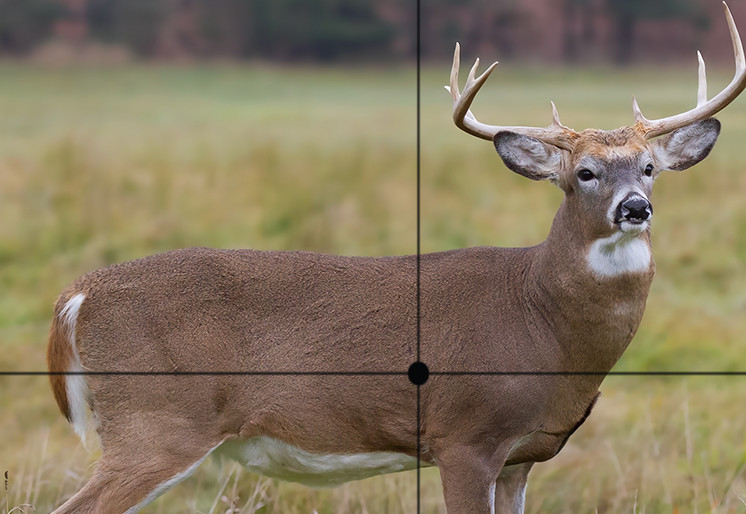 Behind-the-shoulder shot placement aiming point on a whitetail deer for lung shot during deer hunting.
Behind-the-shoulder shot placement aiming point on a whitetail deer for lung shot during deer hunting.
The behind-the-shoulder shot minimizes meat damage while effectively targeting the lungs. Use a fast-expanding bullet for optimal results. Jim Cumming / Getty
Often referred to as the “Money Shot,” the behind-the-shoulder lung shot is a highly effective and widely favored aiming point. The lungs present a large target area, and damaging one or both will reliably bring down a deer. To execute this shot, position your crosshairs approximately one-third to halfway up the deer’s body, just behind the front leg. Focus on a specific spot within this area and maintain a steady trigger pull. This placement ensures you hit at least one lung, likely both, and potentially the heart as well.
This shot is particularly well-suited for fast-expanding bullets. With minimal bone obstruction, the bullet can perform optimally, maximizing internal damage while preserving a significant amount of usable meat. Excellent ammunition choices for this shot include Browning BXR and Winchester Deer Season.
2. The Devastating High-Shoulder Shot
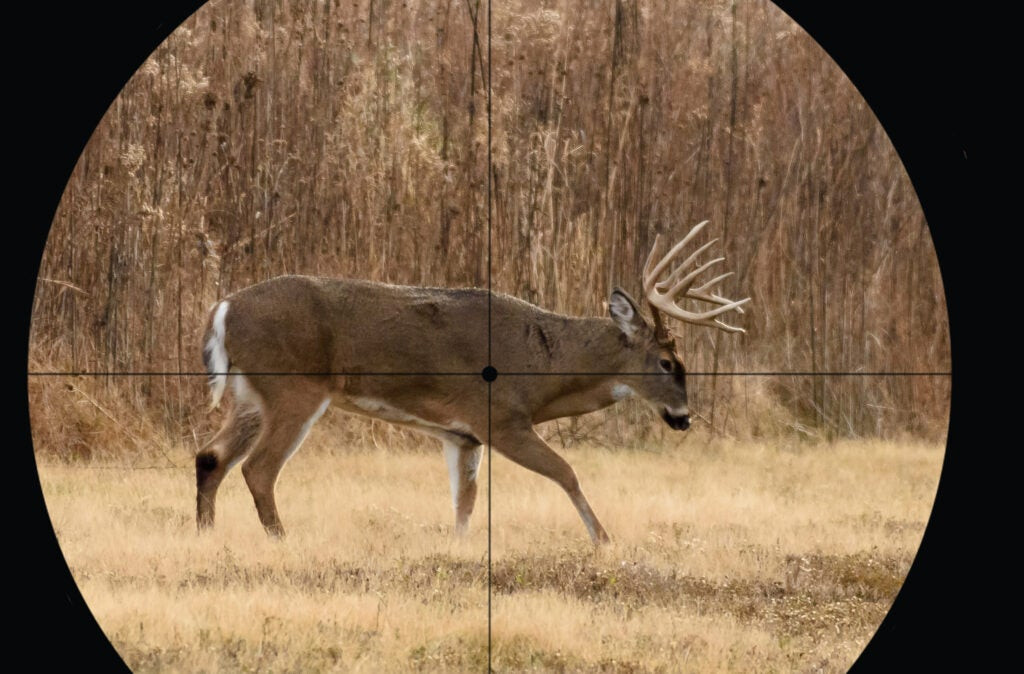 High-shoulder shot placement for deer hunting, aiming to impact lungs, shoulder blade and spine of a whitetail buck.
High-shoulder shot placement for deer hunting, aiming to impact lungs, shoulder blade and spine of a whitetail buck.
Compared to the behind-the-shoulder shot, the high-shoulder shot is more likely to immediately drop a deer in its tracks. Opt for a controlled-expansion bullet for this shot. Larry Keller, Lititz Pa. / Getty
For hunters who prioritize immediate knockdown power, the high-shoulder shot is a preferred choice. To execute this shot effectively, raise your crosshairs to the halfway to two-thirds mark on the deer’s body and position them slightly forward of the shoulder’s center. This aiming point guarantees lung impact and significantly increases the likelihood of damaging the shoulder blade and a portion of the spine.
The high-shoulder shot often results in deer dropping almost instantly due to the combined trauma to the vital organs and skeletal structure. While a deer might still manage to run a short distance, the damage inflicted typically prevents significant escape. Controlled-expansion bullets are recommended for this shot, ensuring sufficient penetration to reach the vitals while managing expansion upon bone impact.
3. Effective Face-On Chest Shot
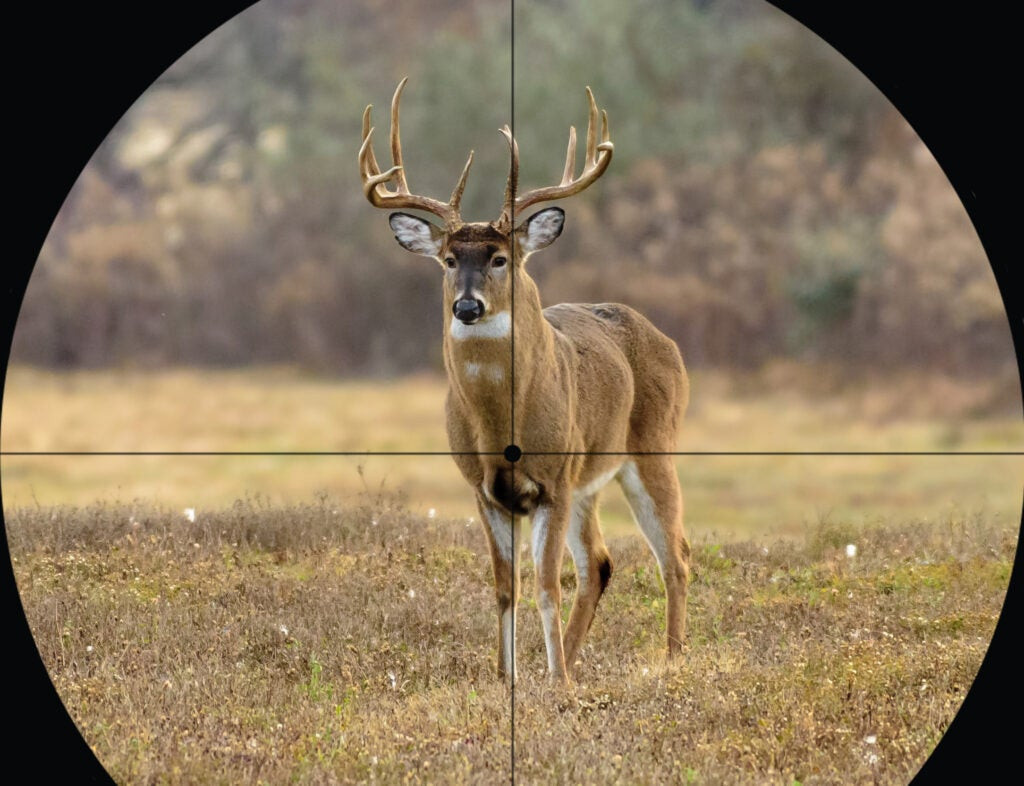 Face-on chest shot placement on a whitetail deer, targeting heart and lungs for effective deer hunting.
Face-on chest shot placement on a whitetail deer, targeting heart and lungs for effective deer hunting.
When a deer is facing you directly, aim for the center of the chest for a highly effective shot. Larry Keller, Lititz Pa. / Getty
The face-on chest shot is arguably one of the most immediately effective deer shot placements. When a deer is facing you directly, aim precisely in the middle of its chest and take the shot. This placement ensures the bullet will traverse both lungs and the heart, resulting in rapid incapacitation.
Deer taken with a face-on chest shot typically travel very little, if at all, after being hit. One memorable example is a large Maine deer taken at 270 yards that simply collapsed sideways upon impact, never touching the ground thanks to a fallen tree. If a buck is quartering slightly towards you, adjusting your aim to the point of the shoulder will also lead to a quick and easily tracked harvest.
4. Situational Back of the Neck Shot
Neck shots from the side or at an angle are generally discouraged due to the high risk of a non-lethal wound. The neck presents a challenging target, with a significant amount of muscle protecting relatively small arteries and the spinal column. A poorly placed neck shot can result in a debilitating flesh wound, allowing the deer to escape and suffer.
However, a facing-away neck shot can be ethically employed under specific circumstances. If a deer is facing directly away from you and you are using a robust bullet, aim for the base of the neck, precisely in the center. This placement targets the spine, which is larger at the neck’s base than in other areas. A successful shot to this area will result in an immediate, ethical kill as the animal drops in its tracks. This shot demands precision and should only be attempted when conditions are ideal.
Where to Shoot a Deer with a Bow: Precision for a Humane Kill
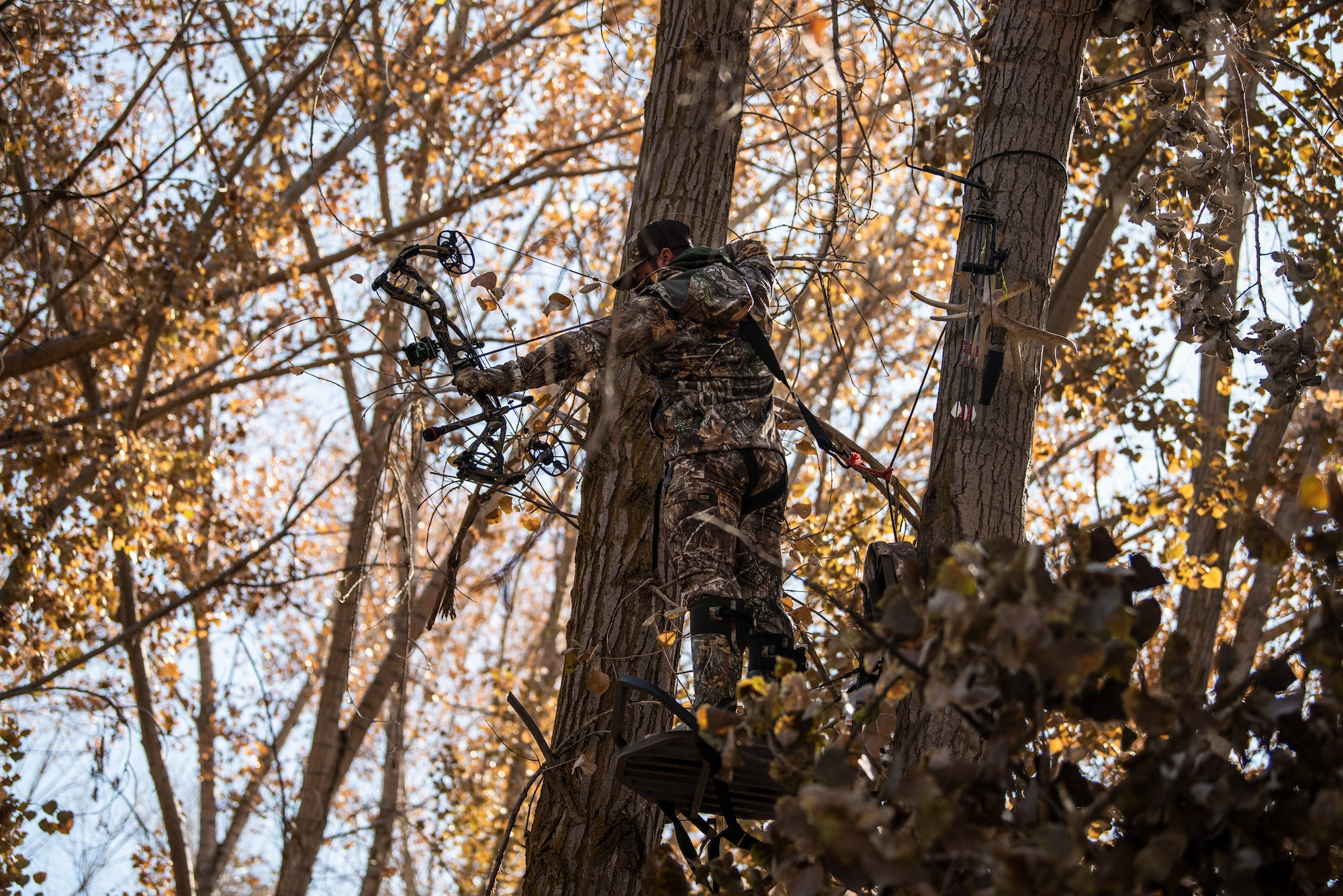 Bowhunter aiming from a treestand for ethical deer hunting shot placement.
Bowhunter aiming from a treestand for ethical deer hunting shot placement.
A bowhunter carefully takes aim, emphasizing the precision required for ethical bow hunting. Hoyt
Bowhunting for deer introduces a different set of considerations for shot placement. Since the 1990s, and even before, a prevailing guideline has been to avoid hitting the shoulder blade at all costs. Traditional bowhunting wisdom held that arrows, regardless of angle, would lack sufficient penetration to reach the vitals if they struck the shoulder bone. Consequently, conventional bowhunting aiming points are designed to strike the vital organs while circumventing the shoulder.
While many bowhunters still adhere to this long-standing principle, a contemporary perspective has emerged. Some modern bowhunters argue that the shoulder is not as impenetrable as once believed. They advocate for aiming at the “Vital V,” an area slightly forward of the shoulder crease, challenging the traditional behind-the-shoulder approach. This divergence in opinion has sparked considerable debate within the bowhunting community. However, the reality is that both perspectives offer valid and effective aiming points. The key is understanding each approach and choosing the one that best suits your equipment and hunting style. Here are four of the best bow shot placements for deer.
1. Reliable Behind the Shoulder Bow Shot
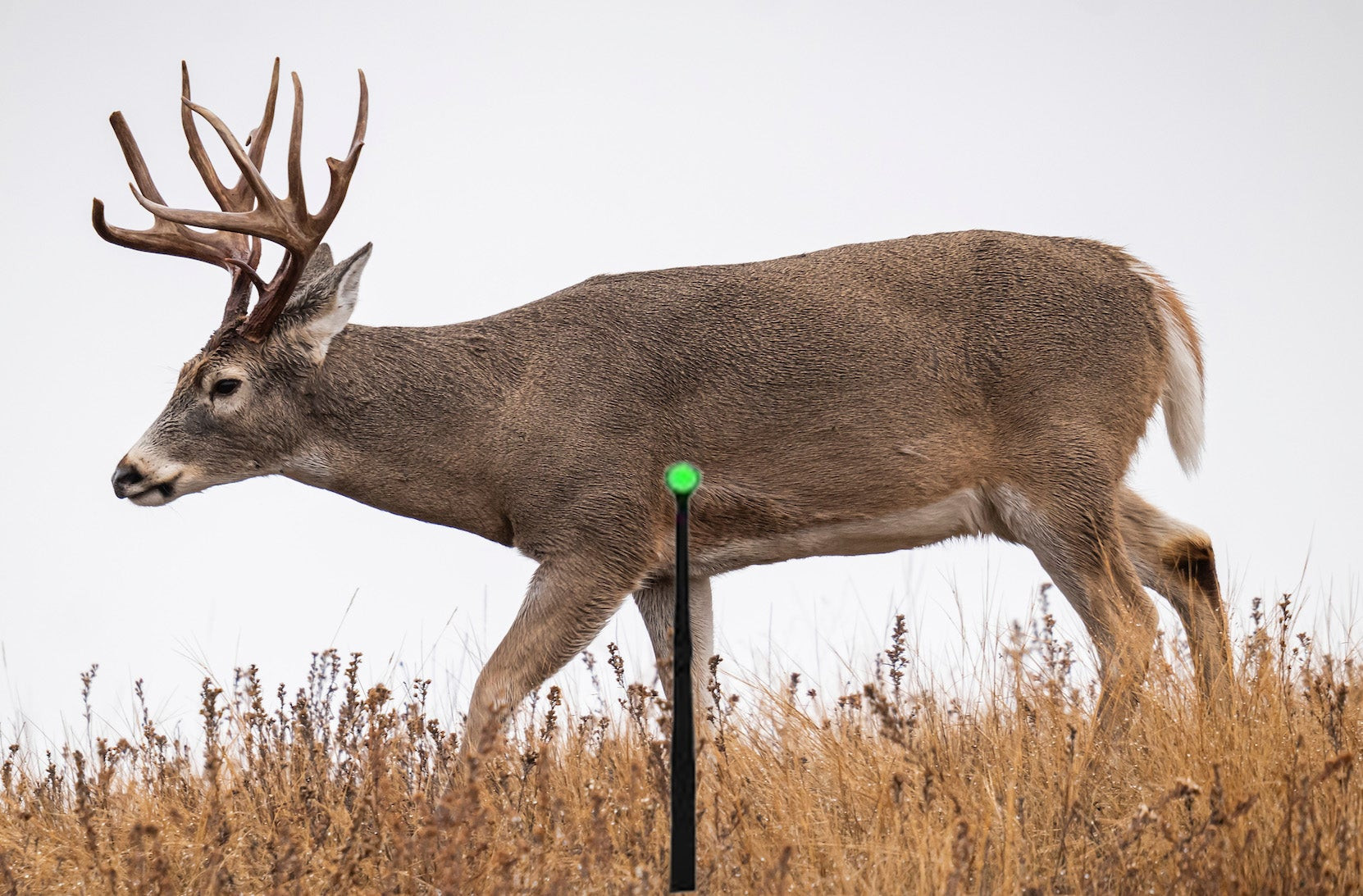 Behind-the-shoulder bow shot placement for deer hunting, a traditional and effective aiming point.
Behind-the-shoulder bow shot placement for deer hunting, a traditional and effective aiming point.
The traditional behind-the-shoulder aiming spot for bowhunters on a broadside deer offers a large margin for error while ensuring vital organ hits. John Hafner Photography
The behind-the-shoulder shot represents the classic, time-tested approach to bow shot placement on deer. For a broadside deer, aim one to two inches behind the shoulder crease and release your arrow. This aiming point ensures you avoid the shoulder bones and directs your arrow cleanly through both lungs. It also provides a degree of forgiveness; even if your shot placement is slightly off, say six inches further back, you will still likely penetrate both lungs.
As proponents of the Vital-V shot (discussed below) point out, there is also a viable area slightly forward of the shoulder crease that avoids bone and still centers the heart-lung region. This behind-the-shoulder approach has a long history of success and remains a reliable choice for bowhunters.
2. The Vital-V Shot: Modern Bowhunting Accuracy
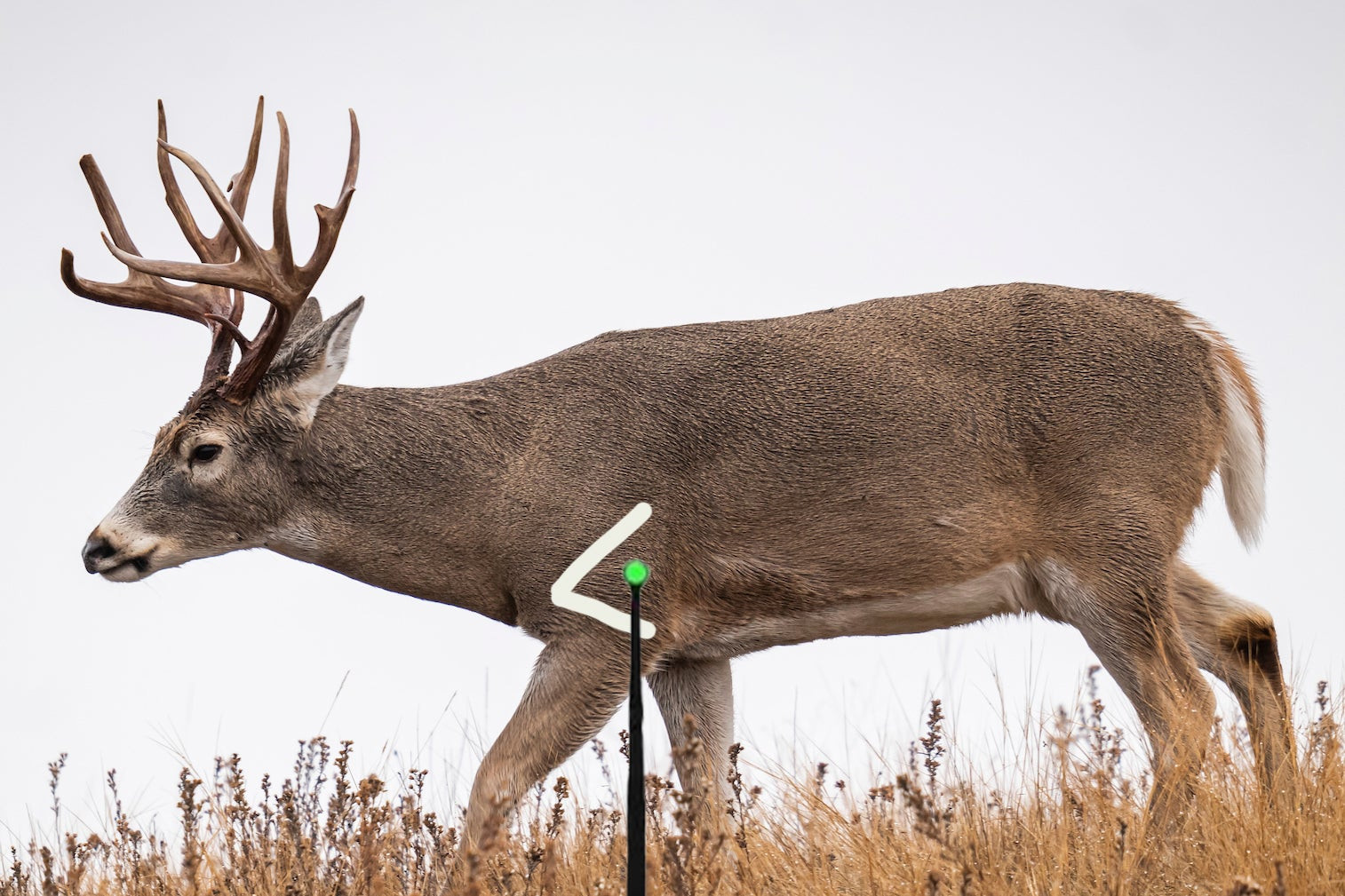 Vital-V shot placement on a deer, highlighting the area formed by the scapula and humerus bones for ethical bow hunting.
Vital-V shot placement on a deer, highlighting the area formed by the scapula and humerus bones for ethical bow hunting.
The “Vital V,” formed by the trailing edges of the scapula and humerus bones just ahead of the shoulder crease, is a highly effective modern bowhunting aiming point. John Hafner Photography
The Vital-V shot represents a more contemporary approach to bow shot placement, gaining traction among modern bowhunters. While traditionally a behind-the-shoulder advocate, I acknowledge the validity and effectiveness of the Vital-V aiming point. The “Vital V” refers to the V-shaped opening formed by the trailing edges of the scapula (shoulder blade) and humerus (upper leg bone) just ahead of the shoulder crease.
To understand the effectiveness of the Vital-V, consider this explanation from experienced hunting editor Will Brantley: “The most lethal area to hit a deer is the forward section of the lungs, encompassing the major pulmonary vessels and the upper portion of the heart—precisely the Vital V. A shot placed here rarely allows a deer to travel far.”
While acknowledging the potential to hit bone if the shot is slightly high or forward, Vital-V proponents argue that modern heavy, high-F.O.C. (Front of Center) arrows tipped with durable fixed-blade broadheads can penetrate these bones effectively. My personal preference remains the behind-the-shoulder shot due to its proven reliability and greater margin for error. However, the Vital-V is undeniably a deadly and accurate aiming point for skilled bowhunters.
3. Optimal Quartering-Away Shot for Bowhunters
The quartering-away shot is widely considered the ideal scenario for bowhunters, offering an excellent angle for penetrating the vital organs. This angle allows you to direct your arrow into the heart-lung area while easily avoiding the near-side shoulder. On a quartering-away deer, it’s crucial to aim further back than on a broadside shot.
Instead of focusing on how much further back to aim, visualize shooting through the deer and hitting the far shoulder. To achieve this, follow the far leg upwards to the mid-body level and aim at that point. A well-placed arrow in this scenario will result in a double-lung and potentially heart shot, ensuring a quick and ethical harvest within a short tracking distance.
4. Quartering-To Shot Options for Bowhunters
Slightly quartering-to shots can be ethically taken by experienced bowhunters. Aiming tight to the shoulder crease or at the Vital-V area on a slightly quartering-to deer can still provide a path to the lungs and result in a short tracking job. However, if the angle is too acute, most bowhunters will wisely pass on the shot.
Determining what constitutes “too hard” of an angle is a judgment call based on your equipment and skill. A critical factor is visualizing the arrow’s exit point. If the predicted exit is too far back to confidently ensure a double-lung hit, it’s best to refrain from shooting.
Some advanced bowhunters using heavy, high-F.O.C. arrows and deep-penetrating fixed-blade broadheads may attempt a hard-quartering-to shot. Their aiming point is typically the soft spot crease between the chest and shoulder, with the intention of the arrow exiting behind the far shoulder. While this shot can be lethal, it demands precise execution and is generally avoided by more conservative bowhunters.
Choosing the Right Ammunition: Bullets and Broadheads Matter
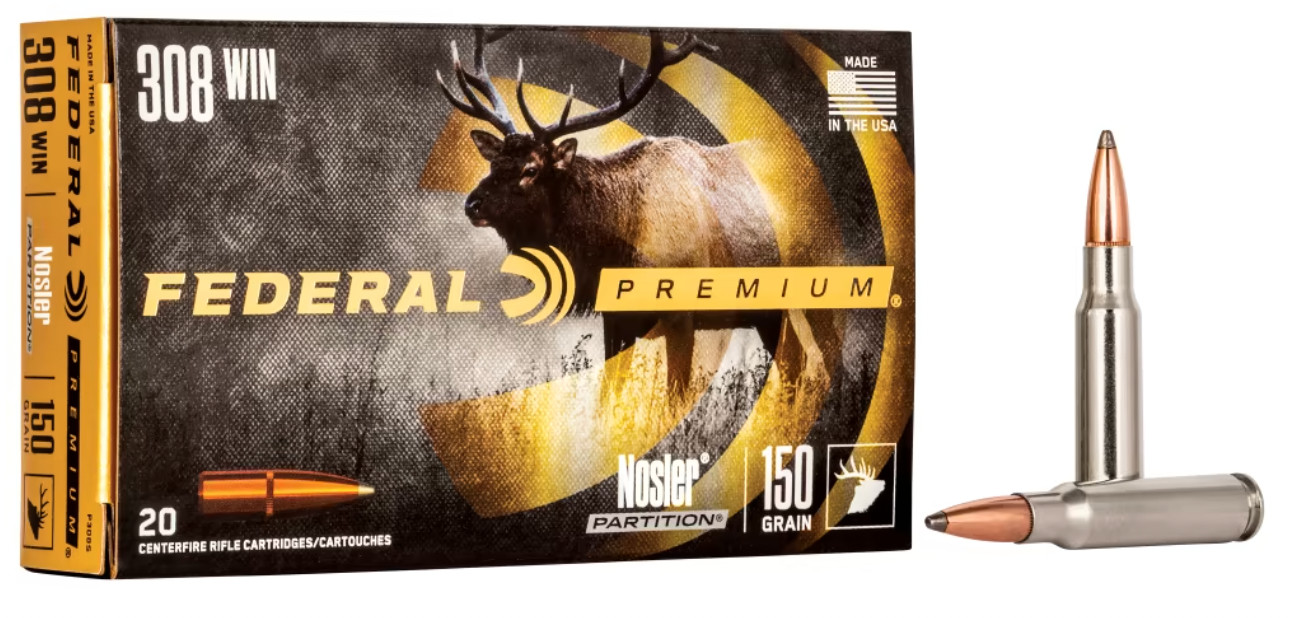 Federal Nosler Partition loads, a reliable bullet choice for ethical deer hunting.
Federal Nosler Partition loads, a reliable bullet choice for ethical deer hunting.
Federal’s Nosler Partition load is a top-quality bullet choice for effective and humane deer hunting. Bass Pro Shops
For rifle hunters, bullet selection is paramount, often outweighing the specific cartridge choice. While various calibers from .223 to .340 Weatherby can effectively take deer, bullet performance varies significantly. Personal experience and professional testing have led to a preference for tough bullets in deer hunting.
Recommended bullet types include Barnes TSX all-copper, Swift Scirocco (a versatile all-around bullet), Swift A-Frames, and Nosler Partitions. These bullets are designed for deep penetration, bone-breaking capability when needed, and reliable exit wounds for effective blood trails.
Bowhunters are increasingly adopting heavier, micro-diameter arrows with a high F.O.C. for enhanced penetration. This trend is particularly relevant for Vital-V shot placement, necessitating the use of tough, fixed-blade broadheads. For behind-the-shoulder shots on broadside deer, some hunters favor wide-cutting mechanical broadheads. However, using heavier arrows with fixed broadheads provides an advantage even with behind-the-shoulder shots, offering increased penetration in case of slightly forward hits.
Unethical Shots: Where Never to Shoot a Deer
While rifles offer a slightly larger margin for error in shot placement compared to bows, certain shots should be avoided with both weapon types to ensure ethical hunting practices.
Head Shots
Under no circumstances should head shots be attempted with either a rifle or bow. The head presents a small, mobile target, increasing the risk of a misplaced shot. Even if a head shot is immediately fatal, it results in unnecessary damage and disrespect to the animal. Worse still, a non-lethal head shot, such as one that removes the lower jaw, can condemn the deer to prolonged suffering and a slow death. Ethical hunters prioritize minimizing suffering, and head shots carry an unacceptably high risk of causing immense pain.
Base of the Tail Shot
The base of the tail shot, sometimes referred to as the “Texas Brain shot,” is occasionally suggested as a way to immobilize a wounded deer to prevent escape. While hitting the base of the spine in this area can indeed drop the deer’s hind legs, allowing for a follow-up shot, it is an extremely risky initial shot. Unless executed with expert precision, the base of the tail shot is far more likely to result in a gut shot, causing severe suffering and a prolonged, inhumane death. This shot should never be considered as a primary aiming point.
Any Unsure Shot
Perhaps the most critical aspect of ethical deer shot placement is shot selection. If you are not completely confident in your shot, do not take it. Deer are rarely stationary for long periods, and shot opportunities constantly evolve. By patiently observing deer body language, you can make informed decisions. A relaxed deer, at ease, allows for careful assessment and shot preparation. However, a tense, alert deer, exhibiting signs of nervousness (ears forward, stamping hooves), may be about to flee. In such situations, you must either take a well-aimed shot quickly or refrain from shooting altogether if a clear, ethical shot is not presented. Ethical hunting always prioritizes a clean, humane kill above all else.

